Annexes
Annex 1: Reminder on the different levels of
climate
In viticulture, three different levels of climate can be
distinguished:
- Macroclimate: the climate of a region, generally
described by weather stations data. Is independent of local topography, soil
type, and vegetation but is determined by the geographic location. The
macroclimate usually can extent over hundreds of kilometers and defines a
particular grape growing region, such as Bordeaux.
- Mesoclimate: the climate of a site or large vineyard.
It varies from macroclimate as it takes into consideration topography and can
extent up to several kilometers.
- Microclimate: the climate within a vineyard. This
climate depends on the vineyard cultural
practices and can vary by a few centimeters due for example to
the presence of leaves.
(Keller, 2020)
Annex 2: Interview of Julien C., Vineyard Manager
of Château Margaux, in French, on the 19th of July
2022
Célia M. : Bonjour Julien. Dans le
cadre de mon mémoire de fin d'études, je vais vous poser des
questions sur différents thèmes, dans l'objectif de mieux
comprendre la typicité du vin produit, et les effets du changement
climatique sur vos méthodes de production et de management.
Pour commencer, que fait, à votre avis, la
typicité du produit du Château Margaux, justifiant sa valeur
économique ?
Julien C. : Je dirai que la typicité
des vins de Margaux et du domaine provient surtout de leur terroir. On a la
chance d'avoir 60 unités pédologiques différentes, avec
trois types de terrasses différentes, qui forcément apportent un
assemblage beaucoup plus complexe que les domaines voisins qui n'ont pas
forcément d'argilo-calcaire et d'autres terroirs que seulement nous
avons sur l'appellation.
Célia M. : Quelles actions au vignoble
justifient pour vous le plus la qualité des raisins ?
Julien C. : L'intégralité des
tâches. A Château Margaux, toutes les tâches sont
réalisées à la main, c'est du travail d'orfèvre.
Chaque vigneron s'occupe de ses parcelles qui représentent à peu
près 30 000 pieds et ça les rend responsables et «
propriétaires » de la parcelle, et y apportent donc plus
d'attention que du travail en équipe ou de prestation.
Célia M. : Quelles variables au
vignoble vous font choisir une parcelle plutôt qu'une autre pour un
certain type de vin ? Par exemple, comment évaluez-vous qu'une certaine
parcelle entrera une année dans le grand vin, puis la suivante dans le
générique ?
Julien C. : La première des choses ce
sont les études pédologiques où chaque fois qu'il y a une
parcelle d'arrachée on effectue une fosse pédologique pour
vraiment identifier le terroir, ou les terroirs différents de la
parcelle. La deuxième chose c'est la chance qu'on a ici d'avoir des
bases de données énormes depuis 100/200 ans où chaque
maître de chai, chaque chef de culture, chaque responsable d'exploitation
a noté à un moment donné où la parcelle irait dans
les différents vins.
Célia M. : Quels sont les facteurs de
production fixes au vignoble que vous estimez ne pas pouvoir changer pour
continuer de produire ces vins, malgré l'évolution des tendances
de consommation et le changement climatique ?
Julien C. : Changer de cépage veut
dire changer la typicité des vins de Margaux et du Médoc. On a la
chance par rapport à Saint Emilion d'avoir un encépagement
majoritairement Cabernet Sauvignon qui fait des degrés d'alcool encore
tout à fait raisonnables comparés à du Merlot, qui monte
rapidement à 15-16° dans les années les plus chaudes, alors
que lorsqu'on monte à 13,5-14° pour du Cabernet Sauvignon c'est
déjà le grand maximum. Changer de cépage pourrait
être mal vu par les consommateurs qui ne retrouveraient pas
l'identité d'un vin médocain et de surcroit d'un vin de
Château Margaux. Adapter les pratiques agronomiques sur l'orientation des
rangs pourquoi pas. Mettre en place de l'irrigation, tant que les instances de
l'INAO nous disent pas que c'est ok dans des décrets
89
d'appellation, ce sera compliqué. Au niveau pratiques
agronomiques, il y a des choses à faire sur les semis temporaires de
couverts végétaux, sur les pratiques d'échardage,
d'effeuillage, sur la résistance des porte-greffes à la
sécheresse car certains résistent mieux que d'autres. Mettre plus
de sélection massale que de clonale pour avoir une diversité
génétique. Il y a donc encore des choses à faire au
vignoble.
Célia M. : Quelles conséquences
ce changement aura-t-il sur vos pratiques, si vous estimez qu'il aura un impact
?
Julien C. : Les conséquences seront
multifactorielles, le Médoc est une presqu'île, c'est un isthme,
et on aura forcément un jour la Gironde qui va monter encore plus haut
que ce qu'elle n'est déjà. Il va sûrement y avoir des
terres qui vont être perdues. Ensuite, il faudra trouver des solutions
autres qu'agronomiques tels des filets de protection pour amener de la vendange
la plus saine et la plus qualitative.
Célia M. : Pourriez-vous envisager
l'incorporation de pratiques comme l'effeuillage ou le kaolin dans l'agenda des
travaux de la vigne, ou cela posera-il un soucis par rapport à la charge
de travail des vignerons à cette période ?
Julien C. : L'effeuillage pourrait être
incorporé s'il est fait au bon stade phénologique ; nouaison /
début fermeture. Après c'est trop tard car la grappe n'a pas le
temps de s'adapter aux coups de chaud. Le kaolin pourquoi pas s'il n'y a pas de
modifications des paramètres organoleptiques des vins. Employer du
calcaire pur type Megagreen qui possède près de 40% de calcaire
et les processus silices qui sont aussi importants pour rendre les feuilles
plus résistantes à la chaleur.
Cela posera forcément problème par rapport
à la charge de travail car ces produits ne sont pas forcément
miscibles avec nos traitements actuels dont nécessiteraient une charge
de travail supplémentaire.
Célia M. : Quels seraient les limites
ou challenges d'implémenter ces solutions en termes d'expertise, de
procédés, et de main d'oeuvre ?
Julien C. : Dans l'ordre, les limites sont :
1. Les hommes, 2. Les moyens (tracteurs), 3. Climato, 4. Les travaux qui sont
gérés en même temps. En termes de main d'oeuvre, cela
impliquerait des charges de travail supplémentaires et donc
potentiellement l'embauche d'intérimaires.
Célia M. : Quels sont pour vous les
risques directs du changement climatique sur le vignoble de Château
Margaux ?
Julien C. : Il y aura forcément des
impacts au niveau qualitatif car on aura des baies qui auront un goût de
cuit, et il faudra faire plus de nettoyage de grappes dans les
éclaircissages. Il faudra donc adapter nos pratiques agronomiques au
changement climatique.
Célia M. : Serait-il envisageable dans
les années à venir de changer l'encépagement du vignoble
pour y implémenter des variétés plus résistantes
aux stress hydrique et thermique ?
Julien C. : La principale personne à
convaincre serait la propriétaire, car si elle n'est pas d'accord pour
ce type de changement, on ne fera pas grand-chose.
Célia M. : Depuis combien
d'années environ observez-vous de l'échaudage sur les vignes du
Château Margaux ?
Julien C. : Combien d'années c'est
difficile à dire mais tous les millésimes où on a eu des
coups de chaud ; 2003, 2005, 2011, 2018, 2020 et 2022. Ce sont que des
millésimes où on a eu des pics de chaleur qui causent des
symptômes d'échaudage.
Célia M. : L'échaudage
représente-t-il un risque significatif pour votre production ?
Julien C. : Sur le rendement oui.
Célia M. : Jusqu'où
estimez-vous pouvoir aller en production viticole pour éviter
l'échaudage et conserver un volume et une qualité de vin
suffisants ?
Julien C. : Au maximum, tous les moyens sont
bons.
Célia M. : C'est tout pour moi, je
vous remercie pour le temps que vous m'avez accordé et vous souhaite une
bonne fin de journée !
Julien C. : Avec plaisir, n'hésitez-pas
à me contacter si vous avez des questions supplémentaires.
90
Annex 3: Soil map for the different parcels of
Château Margaux, based on soil analyses, 2015
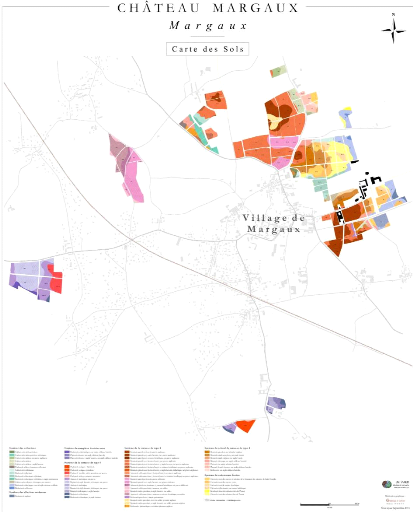
91
Annex 4: Repartition of the grape varieties in the
vineyard of Château Margaux, and its reference blocks
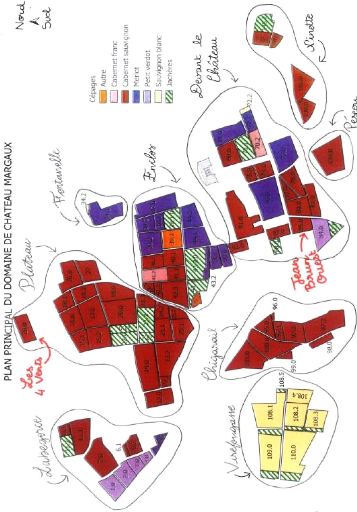
92
Annex 5: Organigram of the company summarizing the
different services and managerial levels
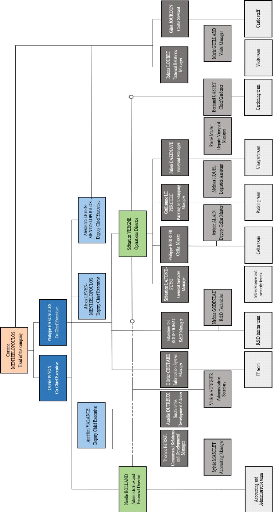
93
Annex 6: Map of Château Margaux's parcels and their
row orientation, in red the studied parcels
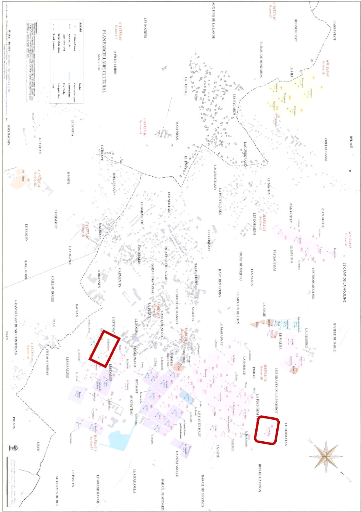
94
Annex 7. Photographs of the kaolin mix preparation in
the Mixbox, and of the sprayer used
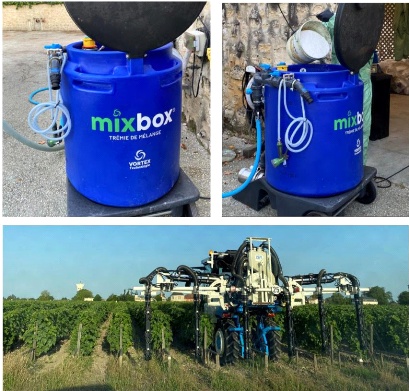
Annex 8. Kaolin sprayings calendar for the 2022
season
|
|
|
|
|
|
|
|
|
|
|
|
|
|
|
|
|
|
|
|
|
|
|
|
|
|
|
|
Kaolin spraying preparation
|
|
|
Real product usage
|
|
|
Dose (kg/ha)
|
Application
|
Mix
|
L4VS
|
JBO
|
Total
|
L4VS
|
JBO
|
Total
|
|
14/06/2022
|
20
|
2*10kg
|
Water (L)
|
93,33
|
106,67
|
200
|
43,16
|
47,26
|
90,42
|
|
14/06/2022
|
20
|
2*10kg
|
Kaolin (kg)
|
6,22
|
7,11
|
13,33
|
2,88
|
3,15
|
6,03
|
|
14/06/2022
|
20
|
2*10kg
|
Adjuvant (mL)
|
18,67
|
21,33
|
40
|
8,632
|
9,452
|
18,08
|
|
07/07/2022
|
20
|
2*10kg
|
Water (L)
|
93,33
|
106,67
|
200
|
43,16
|
47,26
|
90,42
|
|
07/07/2022
|
20
|
2*10kg
|
Kaolin (kg)
|
6,22
|
7,11
|
13,33
|
2,88
|
3,15
|
6,03
|
|
07/07/2022
|
20
|
2*10kg
|
Adjuvant (mL)
|
18,67
|
21,33
|
40
|
8,632
|
9,452
|
18,08
|
|
22/07/2022
|
10
|
2*5kg
|
Water (L)
|
93,33
|
106,67
|
200
|
43,16
|
47,26
|
90,42
|
|
22/07/2022
|
10
|
2*5kg
|
Kaolin (kg)
|
3,13
|
3,57
|
6,7
|
1,44
|
1,575
|
3,015
|
|
22/07/2022
|
10
|
2*5kg
|
Adjuvant (mL)
|
18,67
|
21,33
|
40
|
8,632
|
9,452
|
18,08
|
|
29/07/2022
|
10
|
2*5kg
|
Water (L)
|
93,33
|
106,67
|
200
|
43,16
|
47,26
|
90,42
|
|
29/07/2022
|
10
|
2*5kg
|
Kaolin (kg)
|
3,13
|
3,57
|
6,7
|
1,44
|
1,575
|
|
|
29/07/2022
|
10
|
2*5kg
|
Adjuvant (mL)
|
18,67
|
21,33
|
40
|
8,632
|
9,452
|
|
95
Annex 9. Kaolin spraying dose calculation
|
|
|
|
|
|
|
|
|
|
|
|
|
|
|
|
|
|
|
|
|
|
|
|
|
|
|
|
|
|
|
|
|
|
|
|
|
|
|
|
|
|
|
|
|
|
|
|
|
|
|
|
|
|
|
|
|
|
|
|
|
Parcel
|
28.0-2 Les 4 Vents Sable
|
85 Jean Brun Ouest
|
|
|
|
Surface of one block (6 + 2 1/2 ranks)
(ha)
|
0,05
|
0,05
|
|
|
|
Modality surface (3 blocks) (ha)
|
0,14
|
0,16
|
|
|
|
Number of passages per treatment
|
1,00
|
1,00
|
|
|
Total
0,10
0,30
2,00
Surface to spray (ha)
0,14
0,16
0,30
Kaolin recommended dose (kg/ha)
20,00
20,00
20,00
Kaolin mass used (kg)
2,88
3,15
6,03
Flow rate (L/ha)
150,00
150,00
150,00
Mixture volume to prepare (L)
21,58
23,63
45,20
Kaolin concentration (kg/L water)
0,13
0,13
0,133
Volume per passage (L)
21,58
23,63
45,20
Volume with 50L margin per passage (L)
46,58
48,63
95,20
Adjuvant concentration (mL/100L)
20,00
20,00
40,00
Adjuvant volume per passage (mL)
9,32
9,73
19,04
Kaolin mass per passage (kg)
6,21
6,48
12,69
Per passage 1*20kg/ha
Per passage 1*20kg/ha
rounded to 100 L
Per passage
2*10kg/ha rounded
Per passage
2*5kg/ha rounded
Volume to prepare (L)
95,20
100,00
200,00
200,00
Kaolin mass (kg)
12,69
13,33
13,33
6,67
Adjuvant volume (mL)
19,04
20,00
40,00
40,00
Annex 10. Photographs of the Scholander pressure
chamber used to measure water potentials
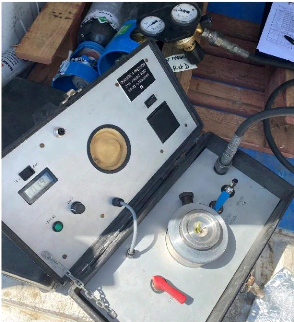
96
Annex 11: Evolution of the maximum, minimum and
average temperatures as well as the rainfall for the 2022 growing season, based
on the Plateau weather station
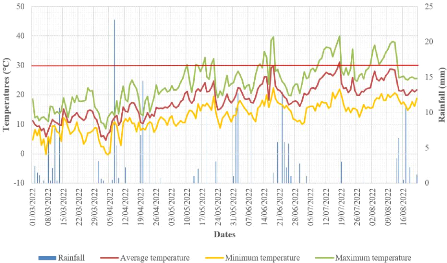
Annex 12: Key phenological stages for the last 4
growing seasons for both studied parcels
|
Key phenological stages
|
|
Mid-bud burst
|
Mid-flowering
|
Mid-ripening
|
|
Parcel
|
Les 4 Vents Sables
|
2022
|
09/04
|
22/05
|
31/07
|
|
2021
|
29/03
|
03/06
|
07/08
|
|
2020
|
08/04
|
22/05
|
28/07
|
|
2019
|
31/03
|
01/06
|
08/08
|
|
Jean Brun
Ouest
|
2022
|
11/04
|
24/05
|
31/07
|
|
2021
|
29/03
|
04/06
|
06/08
|
|
2020
|
09/04
|
21/05
|
25/07
|
|
2019
|
08/04
|
06/06
|
07/08
|
97
Annex 13: Map of JBO's enhanced vegetation index
values for each grapevine plant, Vineview
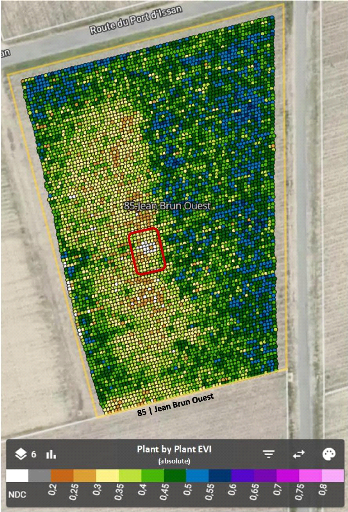
In red, the non-vigorous zone of the study that was excluded from
the measures.
98
Annex 14: Map of L4VS' enhanced vegetation index
(EVI) values for each grapevine plant, Vineview
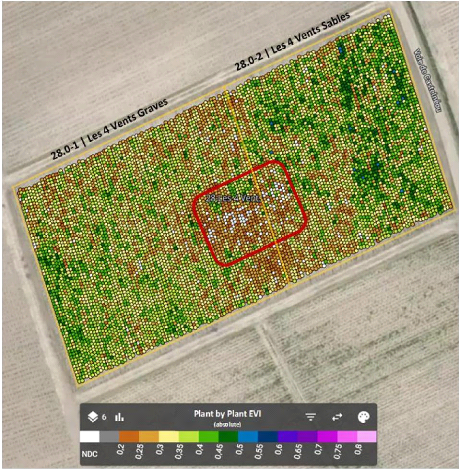
In red, the non-vigorous zone of the study that was excluded from
the measures.
Annex 15: Tinytag captors temperature and humidity
results on the L4VS parcel between July the 17th and the 19th
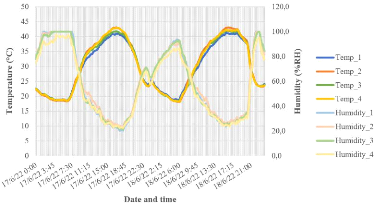
Annex 16: Multiple linear regression model from
XLSTAT between the IR thermometer bunch temperature and the HOBO captor
recorded light and temperature data for the kaolin modality in the Jean Brun
Ouest parcel

99
Annex 17: Multiple linear regression model from
XLSTAT between the IR thermometer bunch temperature and the HOBO captor
recorded light and temperature data for the early defoliation modality in the
Jean Brun Ouest parcel

Annex 18: Multiple linear regression model from
XLSTAT between the IR thermometer bunch temperature and the HOBO captor
recorded light and temperature data for the control modality in the Jean Brun
Ouest parcel

100
Annex 19: Multiple linear regression model from
XLSTAT between the IR thermometer bunch temperature and the HOBO captor
recorded light and temperature data for the kaolin modality in the Les 4 Vents
Sable parcel

Annex 20: Multiple linear regression model from
XLSTAT between the IR thermometer bunch temperature and the HOBO captor
recorded light and temperature data for the early defoliation modality in the
Les 4 Vents Sable parcel

101
Annex 21: Analysis of bunch temperature evolution
on the JBO parcel for the 2022 growing season heatwaves
For the L4VS parcel, the followed bunches of grapes are
exposed on the West part of the canopy and reach a temperature peak between 3
and 5 PM.
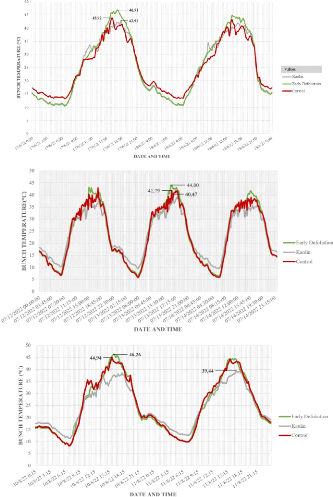
During the June heat wave, the bunches reached a maximum of
42,9°C for the kaolin modality, 46,9°C for the early defoliation
modality, and 43,9°C for the control modality. During the July heat wave
before véraison, the bunches maximum temperatures were: 40,5°C for
the kaolin modality, 44°C for the early defoliation modality, and
41,8°C for the control modality. In the August heat wave during
maturation, the bunches reached a maximum temperature of 39,4°C for the
kaolin modality, 46,3°C for the early defoliation modality, and
44,9°C for the control modality.
The difference between the highest bunch temperature of the
kaolin and the control modalities was on average between 1,01°C and
5,5°C for the JBO parcel. Consequently, it can be concluded that for the
JBO parcel, kaolin sprayings helped significantly reduce bunch temperature.
102
Annex 22: Evolution of mass and volume of 100
berries between July the 21st and August the 22nd, for the JBO parcel


Overall, between July the 21st and August the
22nd, it can be observed that the mass and volume of the kaolin
modality berries are more important than the other modalities.
On the 22nd, the kaolin modality 100 berries weight
was more than 30 grams higher than the control modality, while their volume was
0,2 mL more important. Regarding the early defoliation modality, the berry mass
and volume was closer to the control modality, than to the kaolin.
Consequently, on both parcels, kaolin significantly improved
berry physiology, while early defoliation slightly improved it.
103
Annex 23: Excell laboratory analysis results by
modality, for the Xth of July, and the 10th of August
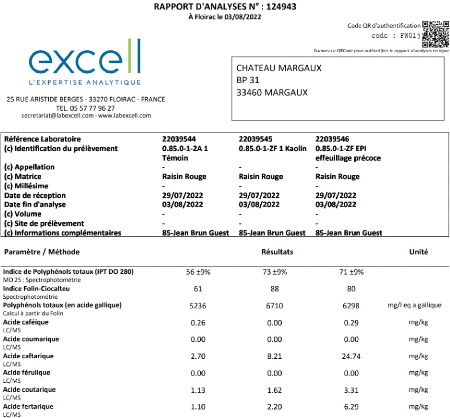
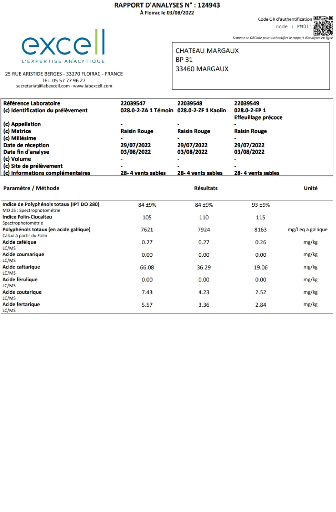
104
105
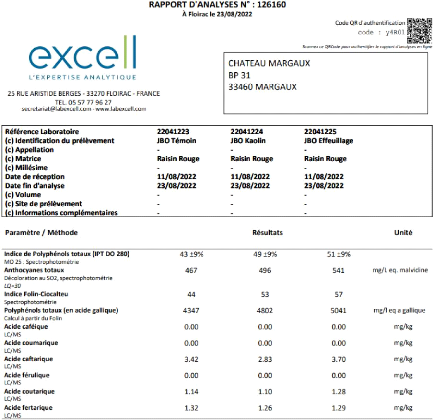
106
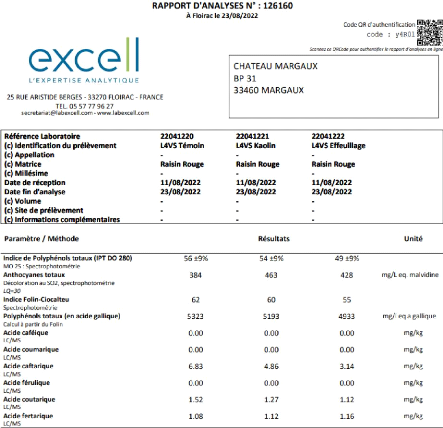
107
Annex 24: Analysis results of berry maturity per
modality, between July the 21st and the 22nd of August, for the JBO
parcel
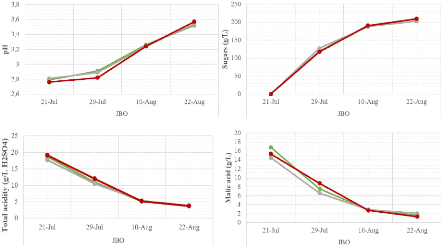
Based on the modelized graphs, the differences in pH, sugar,
total acidity, and malic acidity levels between modalities on the JBO parcel
aren't significatively different between modalities.
On July the 29th, the acidity of the control modality
was slightly more important while the pH was lower, but by the end of the
maturity (August the 22nd), the values stabilized to reduce the gap
between modalities.
Overall, it can be concluded that neither the kaolin nor the
early defoliation modalities significantly affected berry primary
metabolites.
108
List of annexes
Annex 1: Reminder on the different levels of climate 87
Annex 2: Interview of Julien CAZENAVE, Vineyard Manager of
Château Margaux, in French, on the 19th
of July 87
Annex 3: Soil map for the different parcels of Château
Margaux, based on soil analyses, 2015 89
Annex 4: Repartition of the grape varieties in the vineyard of
Château Margaux, and its reference blocks 90
Annex 5: Organigram of the company summarizing the different
services and managerial levels 91
Annex 6: Map of Château Margaux's parcels and their row
orientation, in red the studied parcels 92
Annex 7: Photographs of the kaolin mix preparation in the Mixbox,
and of the sprayer used 93
Annex 8: Kaolin sprayings calendar for the 2022 season 93
Annex 9: Kaolin spraying dose calculation 94
Annex 10: Photographs of the Scholander pressure chamber used to
measure water potentials 94
Annex 11: Evolution of the maximum, minimum and average
temperatures as well as the rainfall for the
2022 growing season, based on the Plateau weather station 95
Annex 12: Key phenological stages for the last 4 growing seasons
for both studied parcels 95
Annex 13: Map of JBO's enhanced vegetation index values for each
grapevine plant, Vineview 96
Annex 14: Map of L4VS' enhanced vegetation index (EVI) values for
each grapevine plant, Vineview 97
Annex 15: Tinytag captors temperature and humidity results on the
L4VS parcel between July the 17th and
the 19th 98
Annex 16: Multiple linear regression model from XLSTAT between
the IR thermometer bunch temperature and the HOBO captor recorded light and
temperature data for the kaolin modality in the Jean Brun Ouest
parcel 98
Annex 17: Multiple linear regression model from XLSTAT between
the IR thermometer bunch temperature and the HOBO captor recorded light and
temperature data for the early defoliation modality in the Jean Brun
Ouest parcel 98
Annex 18: Multiple linear regression model from XLSTAT between
the IR thermometer bunch temperature and the HOBO captor recorded light and
temperature data for the control modality in the Jean Brun Ouest
parcel 99
Annex 19: Multiple linear regression model from XLSTAT between
the IR thermometer bunch temperature and the HOBO captor recorded light and
temperature data for the kaolin modality in the Les 4 Vents Sable
parcel 99
Annex 20: Multiple linear regression model from XLSTAT between
the IR thermometer bunch temperature and the HOBO captor recorded light and
temperature data for the early defoliation modality in the Les 4
Vents Sable parcel 99
Annex 21: Analysis of bunch temperature evolution on the JBO
parcel for the 2022 growing season
heatwaves 100
Annex 22: Evolution of mass and volume of 100 berries between
July the 21st and August the 22nd, for the
JBO parcel 101
Annex 23: Excell laboratory analysis results by modality, for the
Xth of July, and the 10th of August 102
Annex 24: Analysis results of berry maturity per modality,
between July the 21st and the 22nd of August, for
the JBO parcel 106
| 


